WHAT MAKES A PERSIAN SHEEP SPECIAL
Many people when seeing Persian sheep for the first time mistake them for goats. They are however a handsome breed of sheep. The outstanding feature of Persian sheep is their colour and pattern. Persian sheep come in two basic varieties:-
1. Coloured head(kleur kop in Afrikaans)– in this variety the entire sheep is white except for the head which can be either black, brown, red, tri-colour or blue.
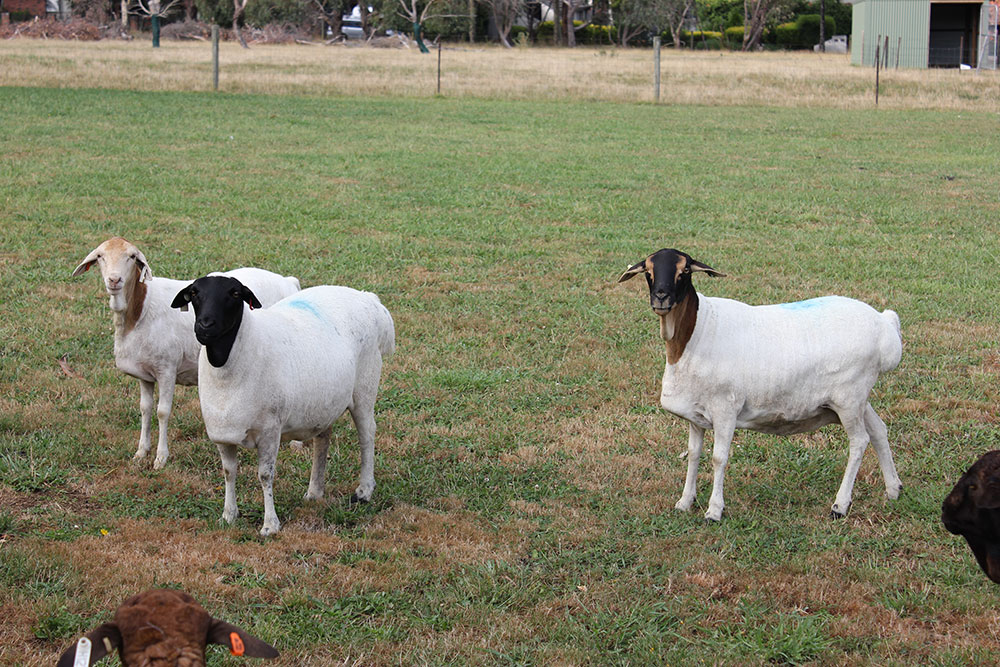
Black headed, red headed and tri-colour headed ewes
2. Harlequin or Speckled – these sheep have solid coloured heads, legs and tails, while the body is covered with spots and patches on a white background. The pattern on each individualsheep is unique. Harlequin Persians are called ‘Skilder Sheep’ in Afrikaans which literally means painted sheep . This term describes these beautiful animals well. These sheep are extremely attractive and can also either be black, brown, red, tri-colour or blue
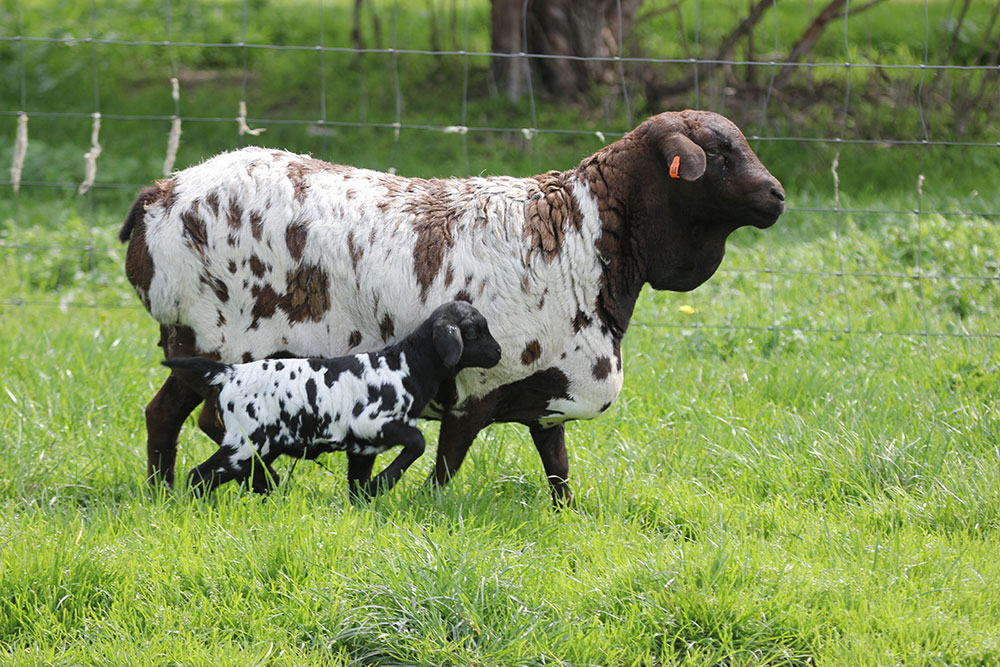
Brown speckled ewe with her lamb
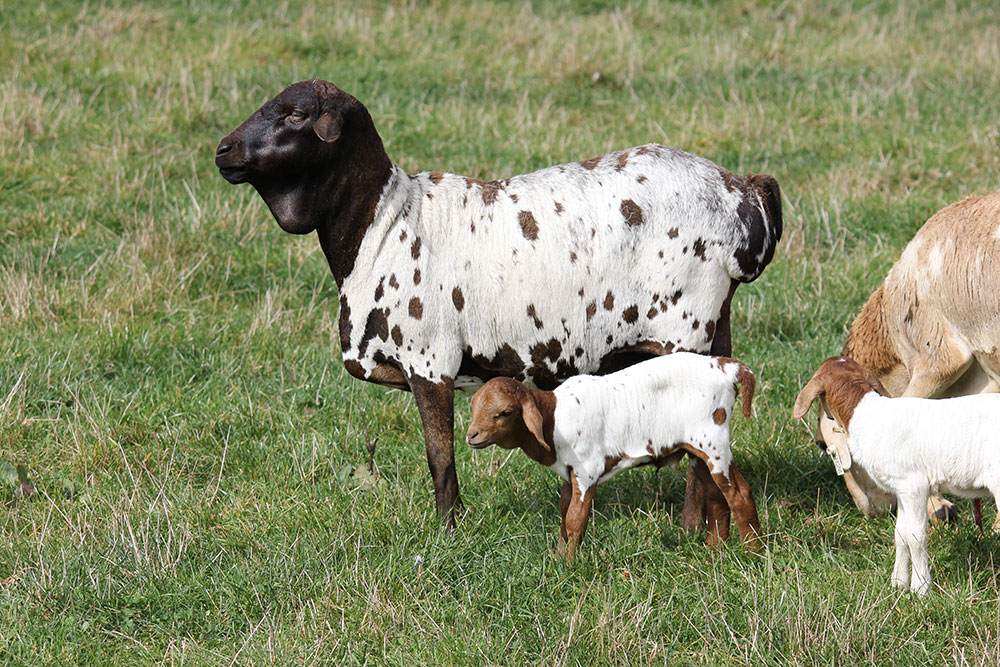
Black Speckled Ewe with her Red Speckled Lamb
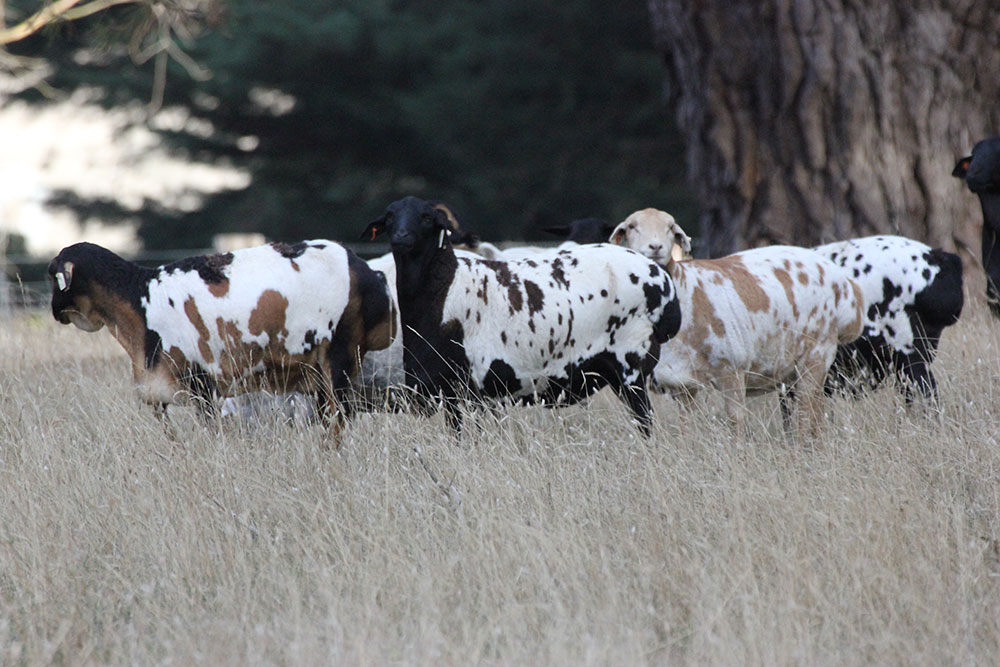
Tri-colour speckled, Red speckled and Black Speckled ewes
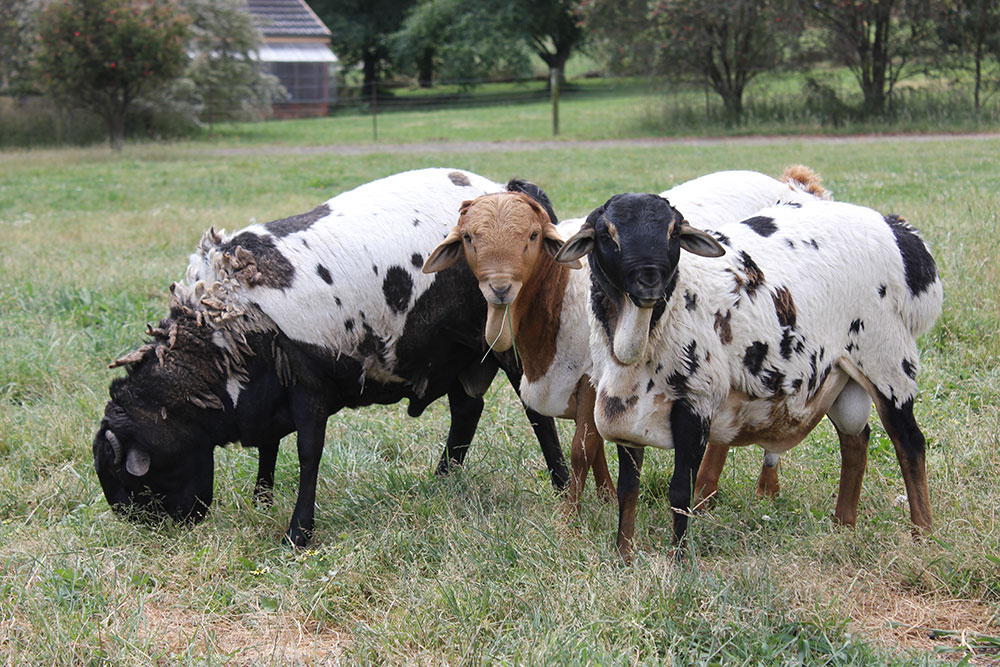
Black Speckled, Red Speckled and Tri- colour Speckled Rams
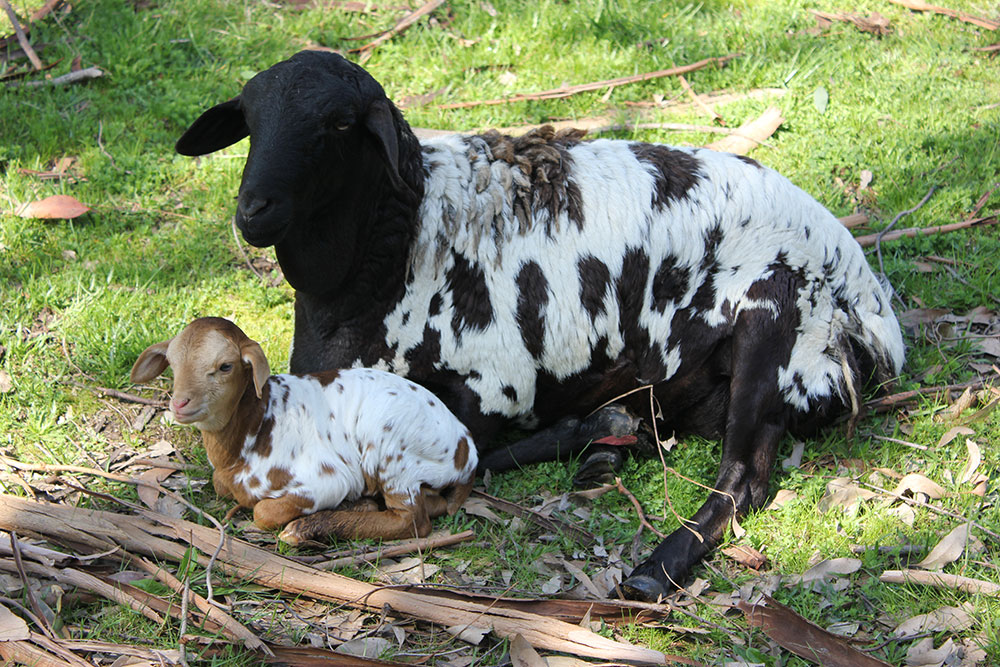
Black Speckled ewe with her Red Speckled lamb
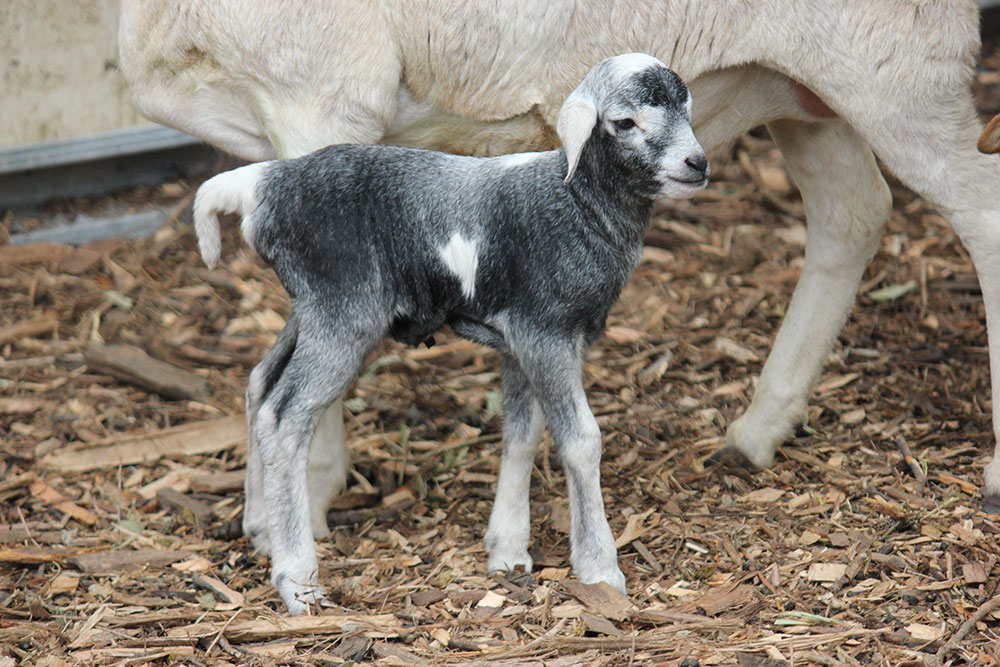
A rare Blue Persian ewe lamb born at Coolibah in August 2013, one of only a handful of blue Persians in Australia

A flock of speckled Persians of mixed colours
Both varieties can be routinely inter-bred and the resultant lambs always have the distinct pattern of one variety or the other. Genetically the ‘coloured head’ pattern is recessive to the harlequin pattern. This means that to breed a ‘coloured head’ lamb either both parents must have coloured heads or be carrying the ‘coloured head’ gene.

Tri- colour headed ewe with her Black speckled and Red headed twin ewe lambs
In both varieties the hooves are coloured and match the coat colour. The ewes do not have horns. The rams also generally do not have horns but approximately one in fifty rams having small horns that sit flat against the head.
Persian sheep also have a number of distinctive structural features. They have a large flap of skin called the ‘dewlap’ which extends below their throat and also a prominent anterior breast bone called the ‘manubrium’. When in good condition they store fat naturally in an area around the tail base. This fat can be used as an energy source and is a characteristic shared by some other African breeds of sheep. Because of this characteristic this group has sometimes been referred to as ‘fat bottomed’ sheep.

All Persians have a large skin flap below their jaw called the dewlap
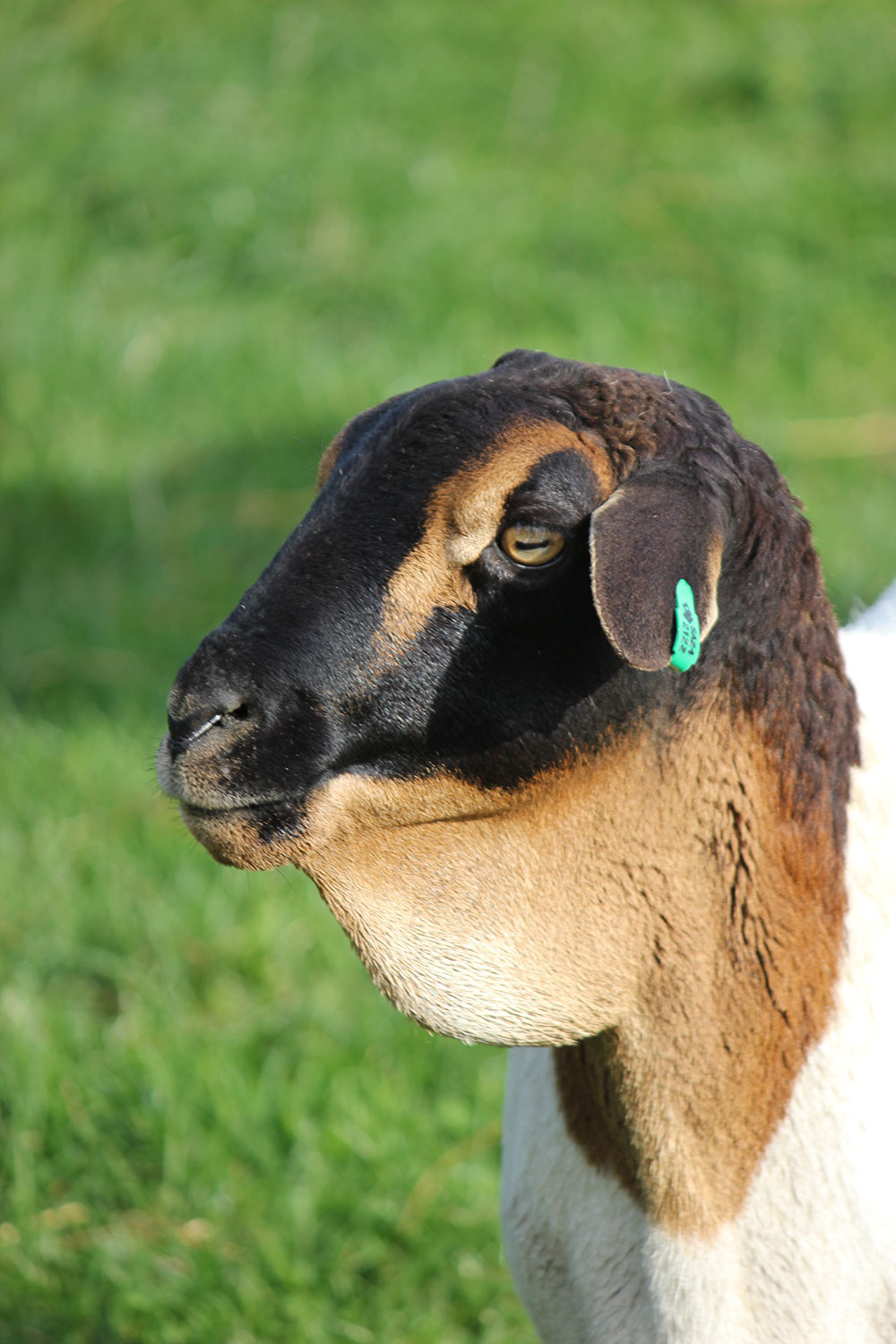
The dewlap of a Tri-colour headed ewe
Persian sheep have a unique tail which is about the size of a human finger and sits at a somewhat quirky angle on top of the tail fat pad. The first part of the tail is attached to the rump while the second part is pushed upwards and ends in the tassel or ‘sambokkie’ which hangs down perpendicularly. The overall appearance is that of an attractive, exotic animal.
No comments:
Post a Comment